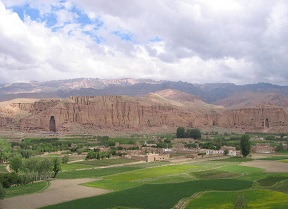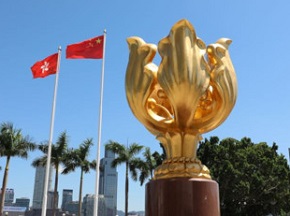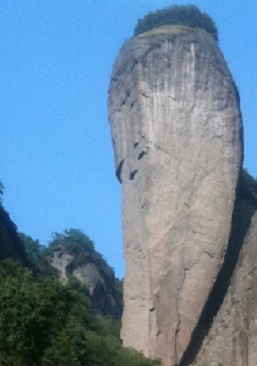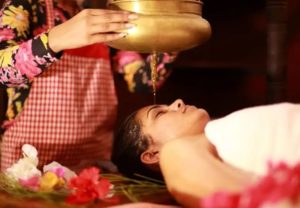World Attractions : Bauhinia,Mustang,Langshan,Brazil,Nanga Parbat

World heritage in danger- Bamiyan Valley
The cultural landscape and archaeological remains of the Bamiyan Valley represent the artistic and religious developments which from the 1st to the 13th centuries characterized ancient Bakhtria, integrating various cultural influences into the Gandhara school of Buddhist art. The area contains numerous Buddhist monastic ensembles and sanctuaries, as well as fortified edifices from the Islamic period. The site is also testimony to the tragic destruction by the Taliban of the two standing Buddha statues, which shook the world in March 2001 , according to UNESCO.
Bauhinia – emblem of Hong Kong

The Bauhinia is the emblem of Hong Kong. The Forever Blooming Bauhinia Sculpture that gives the Expo Promenade the commonly used name, Golden Bauhinia Square, was a gift from the Central Government to mark the 1997 Handover – an occasion that held tremendous significance for the world’s largest nation and that stands out as a landmark event in 20th century history. Today the site is hugely popular with Chinese visitors who come to take photos of the Reunification Monument, which bears inscriptions of the calligraphy of President Jiang Zemin who represented China at the Handover Ceremony on July 31, 1997.

Upper Mustang – Lo Manthang
Upper Mustang in Nepal is one of the popular destinations for trekkers around the world. A trek into Upper Mustang is similar to trekking in Tibet of China. Mustang was, until 1950, a separate kingdom within the boundaries of Nepal. The last king, the Raja of Mustang, still has his home in the ancient capital known as Lo Manthang. Trekkers need a special trekking permit to visit Upper Mustang. Lo Manthang, the old capital, is reached in four days and at least one extra day should be spent here to soak in the sights and sounds of this unique walled settlement. Image: Mustang’s last official king Jigme Dorje Palbar Bista’s palace in Lo Manthan, Upper Mustang – NTB

Pepper Peak in Langshan Mountain area, Hunan of China
As one of the six excellent scenic spots in Langshan mountain area in Xinning County, Hunan Province of China, Pepper Peak features green top and prismatic body. It looks like a huge red pepper, which is 180 meters high and 100 meters in circumference at top and 40 m at foot. The Pepper Peak scenic area is an excellent representative of Danxia Peak Clusters and a concentrated place of Danxia picturesque landscape such as the Camel Peak, the Candle Peak and the Pepper Peak.Alain Robert, a famous French spiderman, climbed on top of the Pepper Peak in 2003, without ropes creating new myth in rock- climbing history. Image: Travel Biz News

Christ the Redeemer Statue: Rio de Janeiro in Brazil
The Christ Redeemer statue that overlooks the city of Rio de Janeiro in Brazil is a monument to the architecture of its day Art Deco , which was completed in 1931. As an art deco icon, Jesus became sleek in form, a near two-dimensional flag with robes of strong lines. Also called Cristo Redentor, the statue towers atop the Corcovado mountain overlooking Rio de Janeiro, Brazil. Image:brazil.org.au

Nanga Parbat- one of the world’s tallest mountains
Nanga Parbat, also called Diamir, one of the world’s tallest mountains, 26,660 feet (8,126 metres) high, is situated in the western Himalayas in the Pakistani-administered sector of the Kashmir region. The mountain’s steep south wall rises nearly 15,000 feet (4,600 metres) above the valley immediately below, and the north side drops about 23,000 feet (7,000 metres) to the Indus River. Austrian climber Hermann Buhl reached the top in 1953. The Kashmiri name Nanga Parbat is derived from the Sanskrit words nagna parvata, meaning “naked mountain.” Diamir is a local name for the peak and means “king of the mountains,” according to Brittanica. Image : Explorersweb
Compiled by TBN , June 2020














